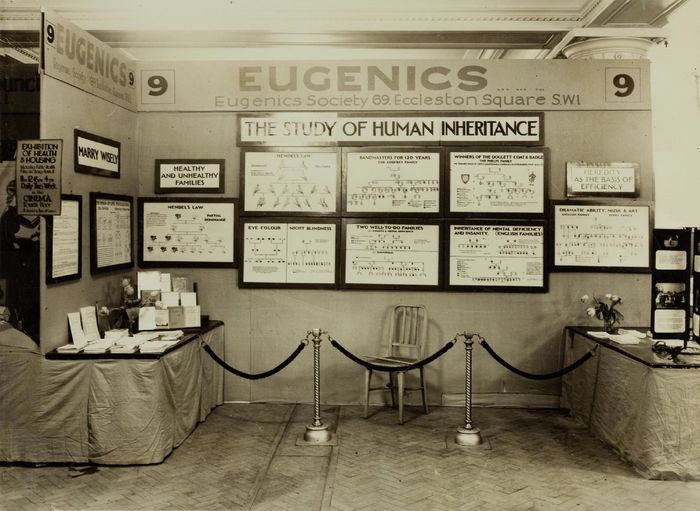Misinformation — it’s in our genes!
Isaac Howell tackles the widely-held notion that our genes perfectly predict who we are, and puts forward a new way to think about our DNA

“It’s in their DNA!”, Rishi Sunak proclaimed. When I sat down to watch the general election debate, I wasn’t anticipating the topic of genetic determinism to feature so prominently, even as a rhetorical device. Here, the (now former) Prime Minister was implying something fundamental; an inevitable outcome unaffected by circumstance, by using the language of genetics. In this case, it was Labour’s tax policy, but you don’t need to think very hard to find other examples of this.
Perhaps you have heard about how people are “hardwired” to act a certain way, or that we have a “genetic blueprint” for certain traits. The notion we have some kind of fundamental instructions responsible for the final output of our actions is an alluring one, particularly when writing about topics such as health and fitness as well as politics. Whether or not Sunak was correct about tax will be shown in the coming years, but I am more interested in the failings of the science in his metaphor.
“The notion we have some kind of fundamental instructions responsible for the final output of our actions is an alluring one”
In this case at least, the former PM cannot be blamed for his misleading language. From our introduction to genes in high school, they are conceptualised as instructions, the first step in a rigid assembly line that leads to a protein. Just like Lego. Those proteins go on to affect biological functions, such as enzymes in chemical pathways and eventually the observable characteristics of an organism (‘phenotype’). Changing the genetic instructions changes the proteins, and with enough changes in the genes (collectively, the ‘genotype’), you get a different organism.
Foundational to this understanding are the classic experiments performed by Gregor Mendel on pea plants. Mendel found the phenotype of the plants, such as wrinkling in peas, could be predicted by their parentage (the source of their genes). More recent studies have confirmed this heritability of wrinkling and further revealed the phenotype is determined by a single genetic mutation.
Tweaking the instructions for an enzyme that produces the starch stored in peas then changes their overall shape in a way observable to monks in the 19th century. So far, so good. In accordance with genetic instructions, peas grow wrinkly or round. Check. And because our brains are made in development, changing those genes changes how we behave, right? The issue with this view arises as the phenotypes become more complex. The development of brains is influenced by a number of environmental factors, and the end product is able to alter itself as the circumstances require.
The problems go further than this, however. Wrinkling in peas may have a single genetic origin, but many more complex traits do not, even those commonly touted as ‘Mendelian’, like human eye colour. More pressingly, Mendel’s uniform experimental environment blinded him to the enormous variation in phenotype that arises from different conditions in development.
Consider a pea plant kept in the library rather than the garden of his monastery. The lack of light available for photosynthesis would restrict sugar, then eventually starch production and form a ‘pealess’ plant, regardless of the genotype. Suddenly a mutation that causes pea wrinkling becomes irrelevant. Though cartoonishly simple, we can begin to see the ways environment can affect phenotypes regardless of genes. In humans, another one of these single gene defects causes the disease phenylketonuria, where babies are unable to breakdown the amino acid phenylalanine. However, this disorder can be circumvented by removing phenylalanine from the baby’s diet.
The genes are all-important in one circumstance, but irrelevant in another. The most important predictor of a trait is how the genes and environment interact, not simply one or another. Instead of simple instructions, a better analogy is genetics are a recipe for phenotypes, important but still influenced by the preparation process.
“The most important predictor of a trait is how the genes and environment interact, not simply one or another”
So, genetics is more complicated than school taught us, why is this such an issue? Most scientific concepts are initially oversimplified, with a more accurate version being retaught at higher levels of education as the student’s understanding advances. Firstly, I’d argue our initial introduction to genetics sets us off so far in the wrong direction, it requires such a large course correction later on as to be actively unhelpful. We are not simply teaching a simplified version of the truth but entrenching damaging attitudes from the beginning.
Secondly, I am sure other scientific fields have their own compelling reasons to be taught differently, but the case of genetics is especially important as it informs our own self-perception. Believing in the rigidity of genotype-phenotype correlation promotes the idea we are far less responsible for our own actions than we actually are. Both scientific and popular culture are rife with ideas like this. From obsessions with finding a ‘gay gene’ to overpromising genetic modification technologies, to the rhetorical flourish in political debates seen earlier. Ugly notions of racism lie downstream from this, and those holding deterministic views are more likely to believe in the associated stereotypes and prejudices.
I did not write this article merely because a politician’s analogy relied on faulty assumptions, but because these assumptions affect us all and it is not too late to change them. Changing how we teach genetics has been shown to change our perception of biological issues, with hitherto unfamiliar students taught the importance of the environment’s interactions less likely to be seduced by deterministic answers. Simple determinism was how our understanding of genetics started, but it is time we move on from that in how we talk and think about the subject.
 News / CUP announces funding scheme for under-represented academics19 December 2025
News / CUP announces funding scheme for under-represented academics19 December 2025 News / Cambridge welcomes UK rejoining the Erasmus scheme20 December 2025
News / Cambridge welcomes UK rejoining the Erasmus scheme20 December 2025 News / SU reluctantly registers controversial women’s soc18 December 2025
News / SU reluctantly registers controversial women’s soc18 December 2025 Film & TV / Timothée Chalamet and the era-fication of film marketing21 December 2025
Film & TV / Timothée Chalamet and the era-fication of film marketing21 December 2025 News / News in Brief: humanoid chatbots, holiday specials, and harmonious scholarships21 December 2025
News / News in Brief: humanoid chatbots, holiday specials, and harmonious scholarships21 December 2025









